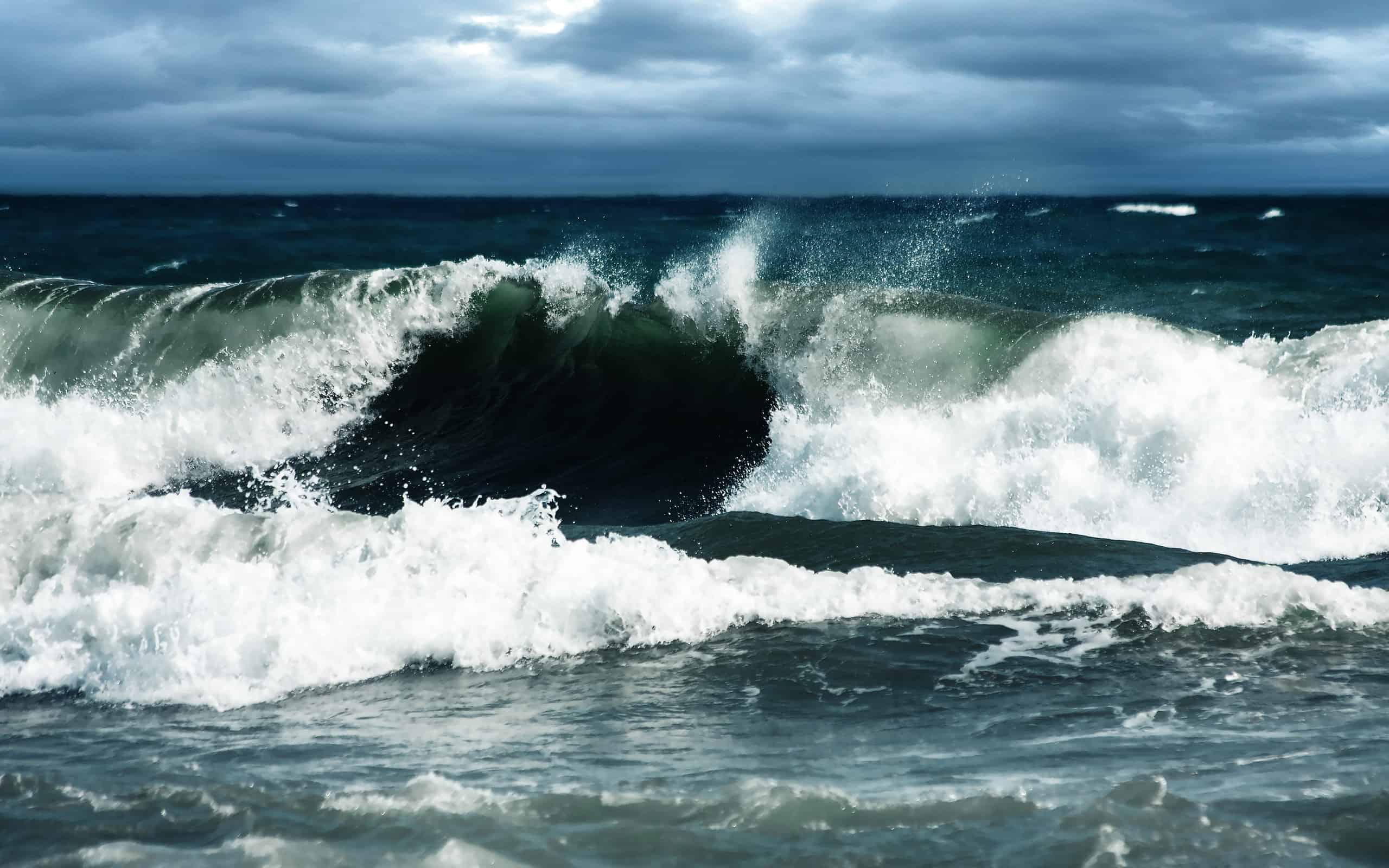In 2009, the term king tide was coined in Australia. What is a king tide? Their causes, frequency, and more are discussed now.
What Exactly Is a King Tide?
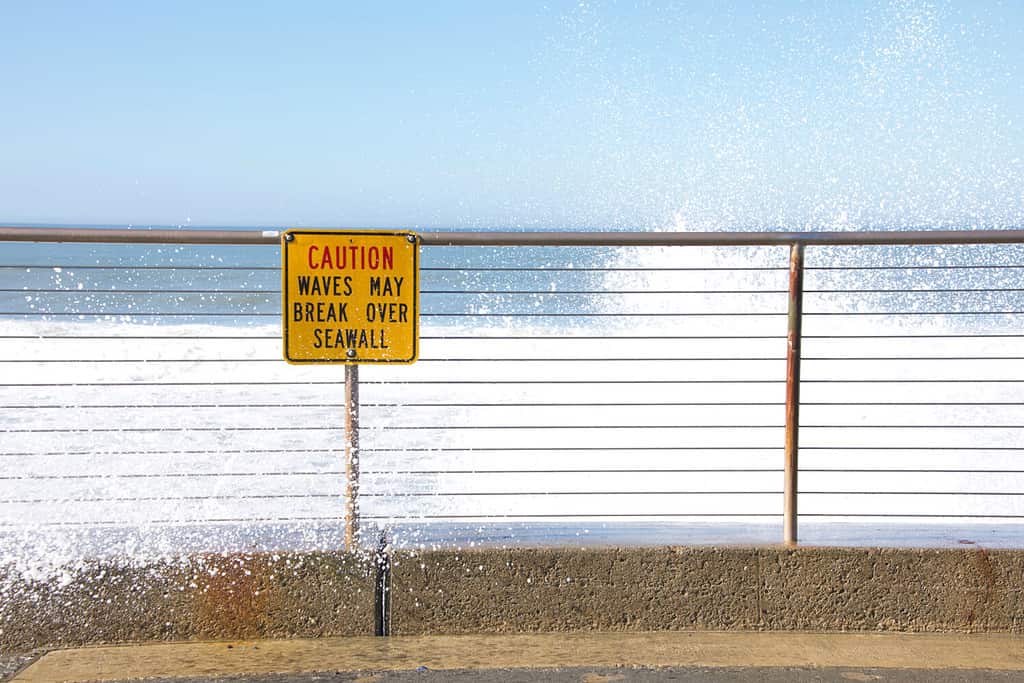
The term king tide is a nonscientific way to describe a tide that is much higher than usual.
©Sheila Fitzgerald/Shutterstock.com
A king tide is a layman’s term for a much larger high tide than usual. While it has no scientific definition, it’s a phrase that’s commonly used in news sources and beach towns. For a tide to be considered a king tide, it must have a higher water level than a normal high tide.
What Causes Regular High and Low Tides?
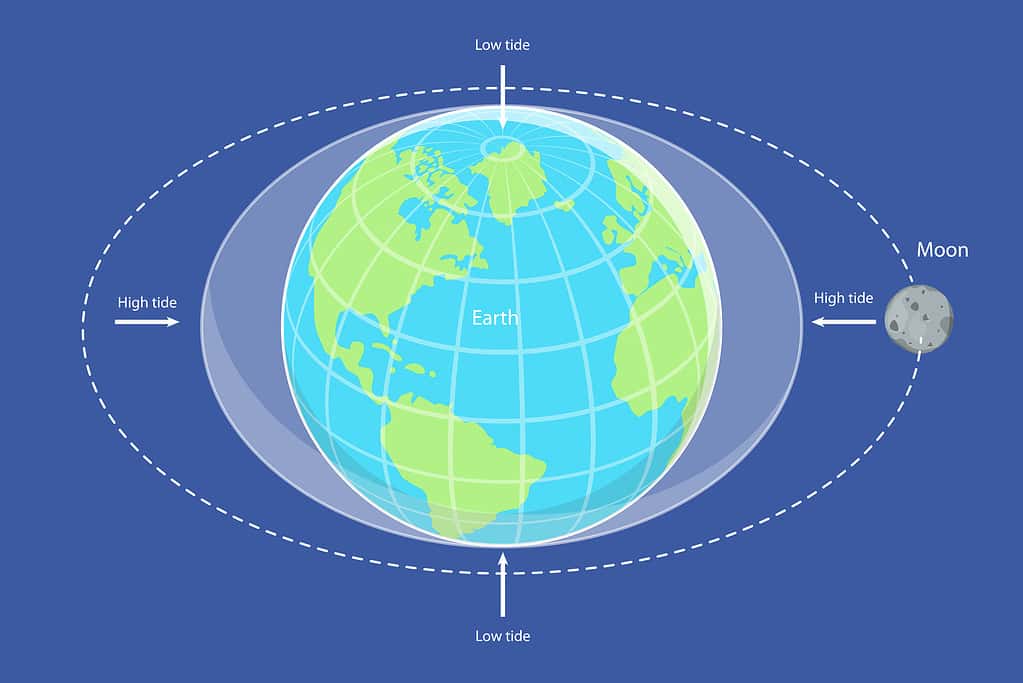
The gravitational pull of the Moon creates the tides.
©TarikVision/iStock via Getty Images
Tides refer to the movement of seawater around Earth due to the gravitational forces of the Moon and Sun in conjunction with Earth’s movement. The Moon has twice as strong of an effect on tides as the Sun, though both play a big role in the way tides behave.
Tides happen as often as they do mostly because of the gravitational pull of the moon. Wherever the moon is, the ocean’s water is pulled toward it.
On the exact opposite side of the planet from the Moon, the tide is also high. That’s because of the oval shape that the Moon’s gravity creates out of the surface water on our planet. At right angles to this high tide oval pointed at the moon are the low tides.
How Often Do High and Low Tides Happen?
There are usually two high tides and two low tides per day in most coastal areas. These tides occur on a rotating schedule every 12 hours and 25 minutes.
Approximately every 14 days, high and low tides are their largest during the Full and New Moons. These tides are called spring tides though they have nothing to do with the spring season. They’re named spring tides because the Moon causes water to spring up toward it.
Spring tides are carefully watched by fishermen, scientists, and seagoers. That’s because, on average, they’re about 20 percent more dramatic than the usual low and high tides.
What Causes a King Tide?
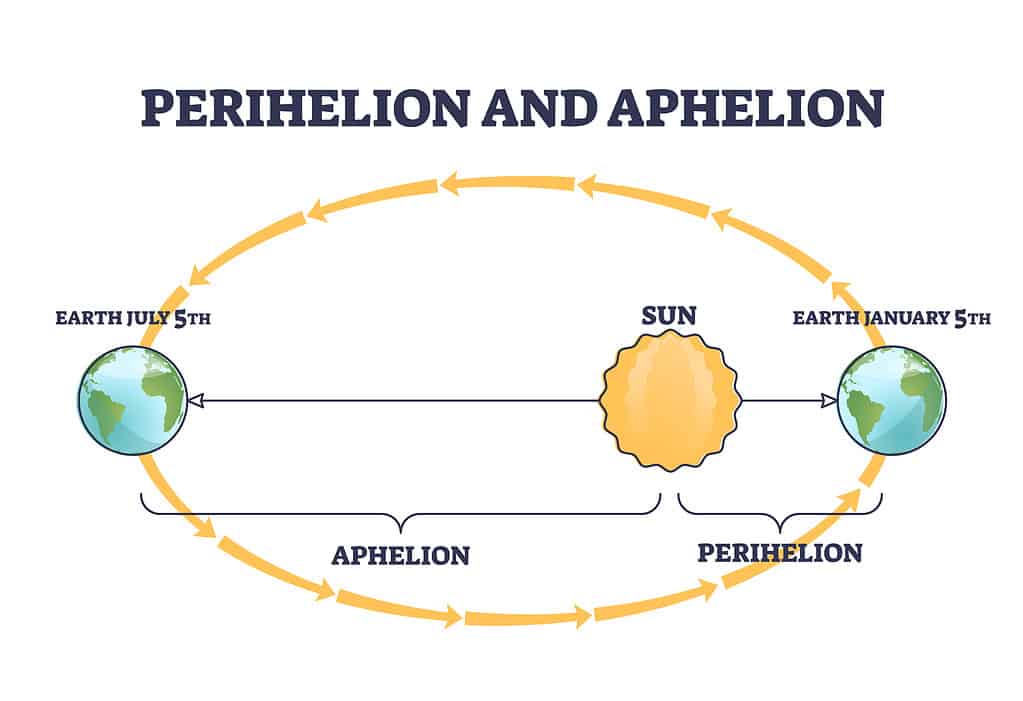
When the Moon is perigee while the sun is perihelion, the highest tides astronomically possible occur.
©VectorMine/iStock via Getty Images
King tides happen during Full Moons or New Moons, though they don’t happen every time the moon is in one of these phases. Tides are king tides when the Moon is perigee during either of these moon phases. When a perigee spring tide occurs, it is called a king tide.
Since the Moon orbits around Earth on an uneven elliptical, it has a point during its 27-day orbit where it is closest, and where it is farthest, from Earth. The moments of closeness are called perigee.
The Sun’s positioning sometimes also enhances king tides. When the Sun is closest to the Earth as the Earth orbits the Sun, it is called perihelion. If the Moon is perigee and the Sun is perihelion at the same moment, the highest astronomical king tides possible occur.
Storms Make King Tides Worse

Storm surges can dramatically increase the impact of a king tide.
©Alagz/Shutterstock.com
A king tide can be much worse if it happens during a bad storm. Bad storms sometimes create storm surges, and when these surges correspond with a king tide, devastating flooding can occur.
A storm surge causes a rise in sea level that exceeds the normal astronomical tides. Storm surges are mostly the consequence of winds pushing more water inland in a tsunami-like way, and the more violent the storm, the bigger the surge will be. Combined with king tides, storm surges can be as drastic as 40 feet higher than a standard tide on a normal day.
How Often Do King Tides Happen?
King tides happen at least twice per year, but there are usually three or four king tides annually. They don’t happen everywhere on the planet at once because each point on Earth lines up with the Sun and Moon at different times.
The largest king tides happen only once or twice per year. For these highest king tides, the Moon must either be new or full, the Earth needs to be at perihelion with the Sun, and the Moon must be perigee with Earth. At this moment, the gravitational pull on the surface water of the Earth is greatest causing the most dramatic tides possible.
When Do King Tides Usually Happen?
Enhanced solar tides occur near January 4 every year though this can vary slightly. During January, the highest tides of the year are most likely to occur. Most places around the globe also experience a king tide sometime in the spring and fall.
Some coastal areas have started calling extreme storm surges king tides as they create dramatically higher tides than at any other time. Since king tides have no scientific basis for their naming, this classification is not incorrect. As a result, the prevalence of king tides is increasing dramatically every year as climate change whips up bigger storms while sea levels rise.
Are King Tides Predictable?
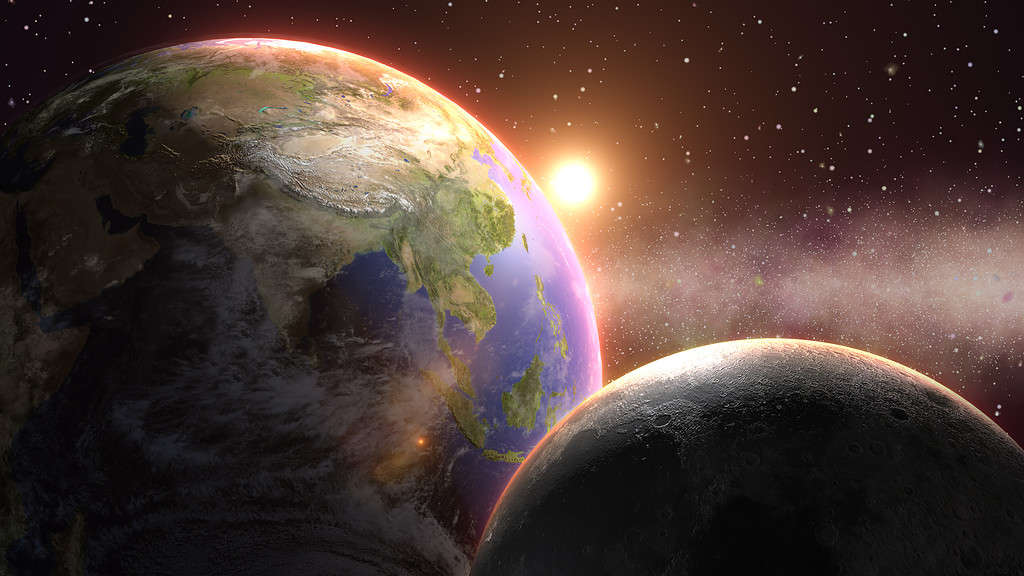
King tides are predictable because astronomers can track the movement of the Earth, Moon, and Sun.
©Jitendra Jadhav/iStock via Getty Images
For the most part, king tides are predictable. That’s because astronomers track the movement of the celestial bodies in our Solar System and can tell us when the Sun, Moon, and Earth will be in certain positions.
Because of this, we know when the Sun, Moon, and Earth are going to be perfectly aligned to produce the highest tides. However, what can’t be predicted far in advance are weather patterns. If bad weather is coinciding with a king tide, advance notice will only be a matter of a few days.
King Tides and Climate Change
King tides are the perfect time to study climate change. They allow scientists and city planners to assess how infrastructure is affected by high sea levels.
As temperatures on Earth continue to climb, sea levels will continue to rise. As a result, the water levels we experience during a king tide will be a standard water level in the future.
By observing the destruction caused by king tides, scientists and governments can begin implementing protective measures ahead of time. There are a few kinds of projects that the data from occurring king tides enhances. These are things like where to install water drainage pumps, where sea walls need to be installed, and which locations are in desperate need of coastal dune rehabilitation.
Thank you for reading! Have some feedback for us? Contact the AZ Animals editorial team.

